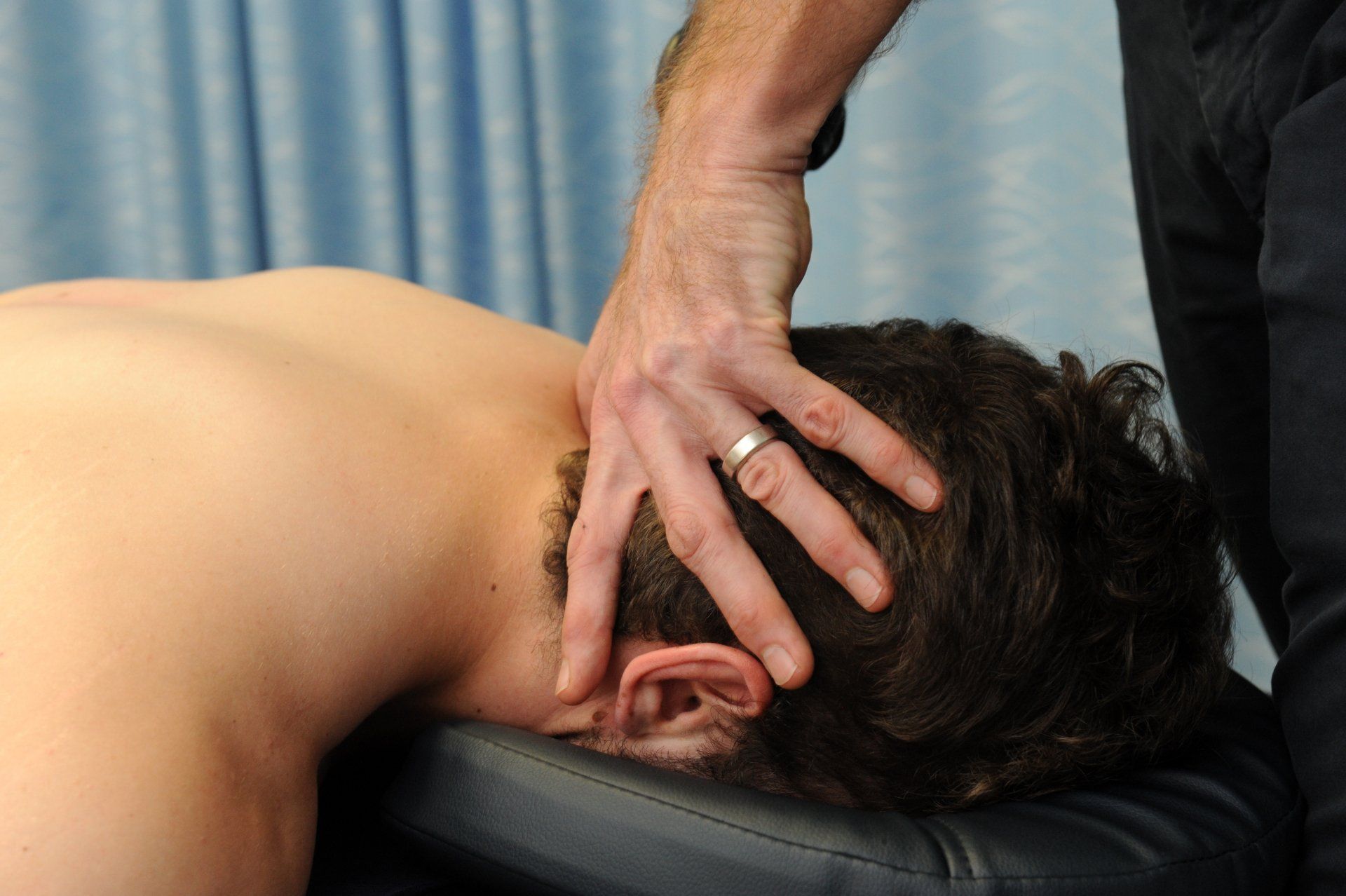The Wrist - Scaphoid Fracture
Scaphoid fractures require careful, early intervention to avoid long-term complications.

Try these low impact exercises for mild wrist pain
Try these low impact exercises for mild wrist pain
Scaphoid Fractures are one of the most common carpal (hand bone) fractures. Scaphoid fractures can be a lengthy fracture to rehabilitate if not diagnosed and managed correctly. Early diagnosis and treatment of a scaphoid fracture is vital.
Anatomy 101
The scaphoid is one of eight small bones in our hand called carpal bones. The scaphoid is located on the radial (thumb) side of our hand, near the base of the thumb, and provides an attachment point for many ligaments in the wrist. See how to palpate the scaphoid bone here.
The scaphoid is an important part of the wrist complex, providing structural stability and smooth movement to the wrist joint.
The scaphoid is unique in that it has a limited blood supply that can be disrupted when the scaphoid is injured. Blood gets from the distal pole to the proximal pole of the scaphoid through retrograde blood flow from the dorsal scaphoid branch of the radial artery. Because of this, a scaphoid fracture can be deemed high risk injury, with complications of a scaphoid fracture including non-union and avascular necrosis (bone cell death), osteoarthrosis and wrist joint instability if not managed correctly.
Who gets it?
The scaphoid is the most commonly fractured carpal bone, with at least 60% of carpal fractures involving the scaphoid bone, accounting for about 11% of all hand fractures. Scaphoid fractures are most common in young males aged between 15 to 25 and commonly occur after a traumatic fall onto an outreached hand (FOOSH). However, it can occur to anyone who has a fall onto their hand, as well as in atraumatic cases.
Diagnosing a scaphoid fracture
A person with a scaphoid fracture will typically describe a mechanism of injury of a FOOSH, with radial (thumb side) wrist pain, or pain at the base of the thumb. They also may experience swelling around the base of the thumb, and tenderness throughout this area. Wrist and thumb range of motion may be limited, and there is often difficulty with grip strength and weight bearing throughout the hand.
Other conditions that could present like a scaphoid fracture can include other carpal bone fractures, distal radius fracture, scapho-lunate ligament injury, triangular fibrocartilage complex injury, or a wrist or thumb joint sprain (such as skier's thumb or gamekeeper's thumb). A physiotherapist can perform some assessments to help diagnose a scaphoid fracture. Common tests include radial snuff box tenderness, scaphoid tubercle tenderness and scaphoid axial loading and compression through the thumb / applying stress to the area.
Do I need a scan?
If a scaphoid fracture is suspected, a Xray is pivotal to management of this condition. This can often be organized through your physiotherapist, GP or emergency department if it is clinically suspected. If not found on initial Xray (common in non-displaced fractures), but still clinically suspected, the wrist should be immobilized in a cast and managed as a suspected scaphoid fracture for 2 weeks. If a scaphoid fracture is present, Xray at this time will demonstrate early fracture callous formation. CT or MRI can also help to diagnose a scaphoid fracture.
Treatment
Because the scaphoid bone has a limited blood supply that can be disrupted when injured, there is a high risk of an adverse outcome following this injury.
Suspected scaphoid fractures should be initially managed in a cast, even if initial Xray is negative, with follow-up Xray at 2 weeks.
This allows for early fracture healing without further disruption to blood supply. Failure to effectively immobilize the wrist can disrupt fracture healing requiring surgical fixation with or without bone graft.
If a scaphoid fracture has been confirmed, it is important to manage this injury as promptly as possible. The location of the fracture will determine how the injury is initially managed. Management of a scaphoid fracture can be either conservative (not requiring surgery, just immobilizing in a cast or splint) or surgical (requiring internal fixation). An Orthopaedic Specialist will guide the individual on how the fracture is to be managed.
After the initial period of immobilization (typically 6 weeks), the individual can wean out of their cast or brace when instructed to do so. Physiotherapists are important in this process to provide education about safe and gradual loading of the hand and wrist. After a scaphoid fracture, individuals may also experience stiffness in their wrist and thumb, as well as a loss of strength in the hand and upper limb due to disuse.
Working alongside a physiotherapist is highly recommended in this phase of recovery.
A Physiotherapist can provide a tailored rehabilitation program to address these deficits after a comprehensive assessment has been made. A Physiotherapist-led treatment plan, following a scaphoid fracture may include:
- Manual therapy (soft massage, joint mobilizing and other techniques) to aid in pain relief and joint stiffness
- Gradual rehabilitation program: gradual stretching and stretching exercises to help address weakness and stiffness.
- Education and advice on how to safely return to work, sport or other activities of daily living.
How long is it going to take?
Scaphoid fracture is a unique injury due to its complex and limited blood supply, and early diagnosis is key. Distal and waist fractures typically recover fully in 8-12 weeks if managed correctly, while proximal fractures can take longer. All scaphoid fractures are typically immobilized for 6-10 weeks to allow fracture healing to occur, followed by a 4-6 week period of graded load exposure.
Post fracture complications are common, and some fractures can take up to 6 months for a full recovery.
Careful monitoring is required, and surgical intervention may still be required following a period of conservative management if the fracture fails to satisfactorily unite. Working closely with a physiotherapist during the recovery period will allow for a faster return to pre-injury tasks and activities.
The Take Home
Scaphoid fractures are a very common yet easily missed injury to the hand and wrist. They are complex injuries, and early diagnosis is key to minimizing potential complications and adverse outcomes. A physiotherapist can assess wrist injuries, refer you for initial imaging, and provide guidance on the best course of management should you have a fractured scaphoid. Working with a physiotherapist will allow for an efficient diagnosis and seamless rehabilitation process, with appropriate support and guidance at every stage along the road to recovery.
Got wrist pain and want to get it sorted? Give us a call.
At Movement for Life Physiotherapy, we can assess and diagnose the cause of your wrist pain and let you know whether you have a scaphoid fracture, a wrist fracture, or if there is something else going on. With a clear diagnosis and tailored management plan, we'll help get you back to the things you love sooner.
Give us a call now or click on BOOK AN APPOINTMENT to book online.
References
- Almigdad, A., Al-Zoubi, A., Mustafa, A., Al-Qasaimeh, M., Azzam, E., Mestarihi, S., ... & Almanasier, G. (2024). A review of scaphoid fracture, treatment outcomes, and consequences. International Orthopaedics, 48(2), 529-536.
- Clementson, M., Björkman, A., & Thomsen, N. O. B. (2020). Acute scaphoid fractures: guidelines for diagnosis and treatment. EFORT open reviews, 5(2), 96–103. https://doi.org/10.1302/2058-5241.5.190025
- Gray, R. R., Halpern, A. L., King, S. R., & Anderson, J. E. (2023). Scaphoid fracture and nonunion: new directions. Journal of Hand Surgery (European Volume), 48(2_suppl), 4S-10S.
- Li, N. Y., Dennison, D. G., Shin, A. Y., & Pulos, N. A. (2023). Update to management of acute scaphoid fractures. JAAOS-Journal of the American Academy of Orthopaedic Surgeons, 31(15), e550-e560.
- Sabbagh, M. D., Morsy, M., & Moran, S. L. (2019). Diagnosis and management of acute scaphoid fractures. Hand Clinics, 35(3), 259-269.
- Snaith, B., Walker, A., Robertshaw, S., Spencer, N. J. B., Smith, A., & Harris, M. A. (2021). Has NICE guidance changed the management of the suspected scaphoid fracture: A survey of UK practice. Radiography, 27(2), 377-380.
- Suh, N., & Grewal, R. (2018). Controversies and best practices for acute scaphoid fracture management. Journal of Hand Surgery (European Volume), 43(1), 4-12.








